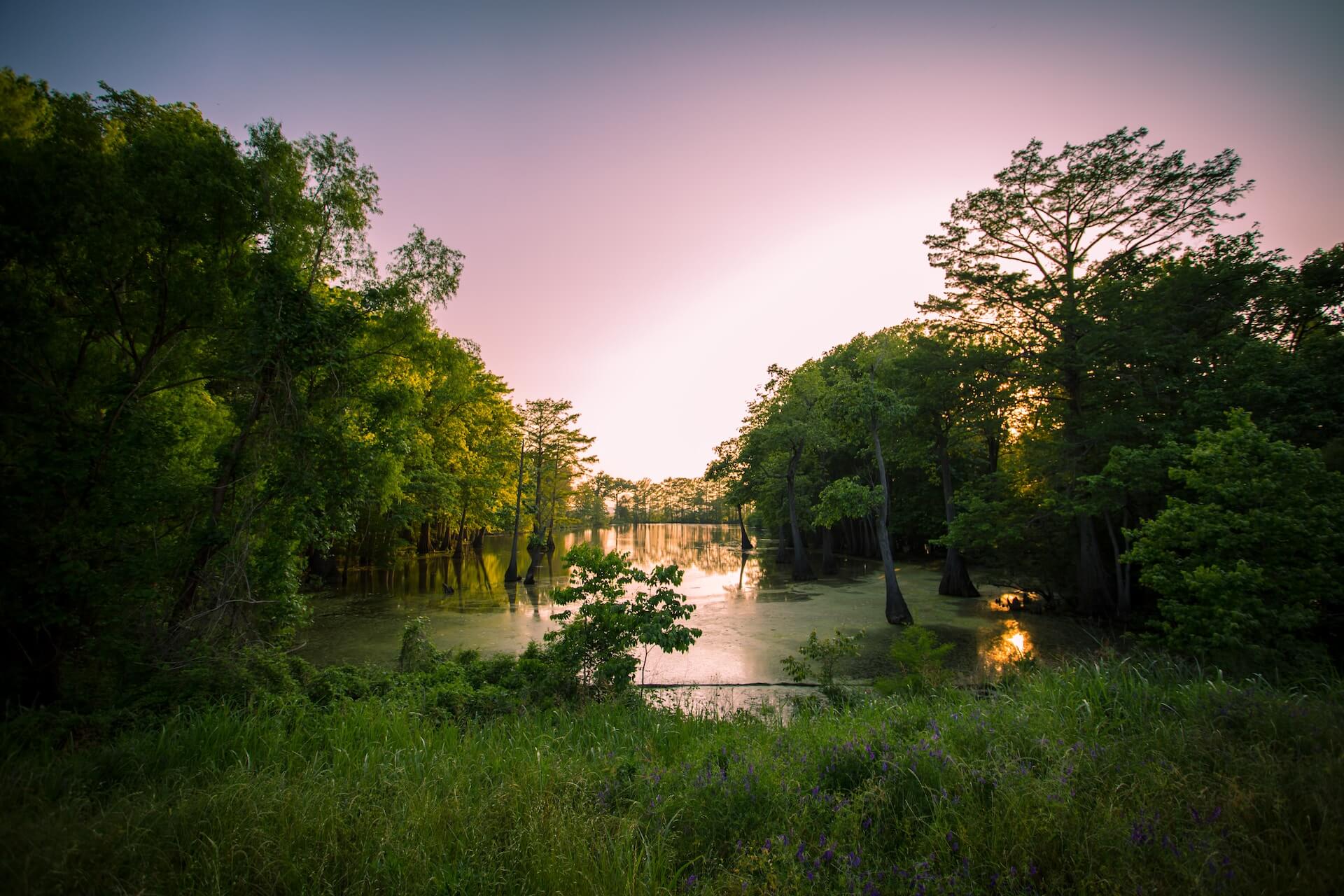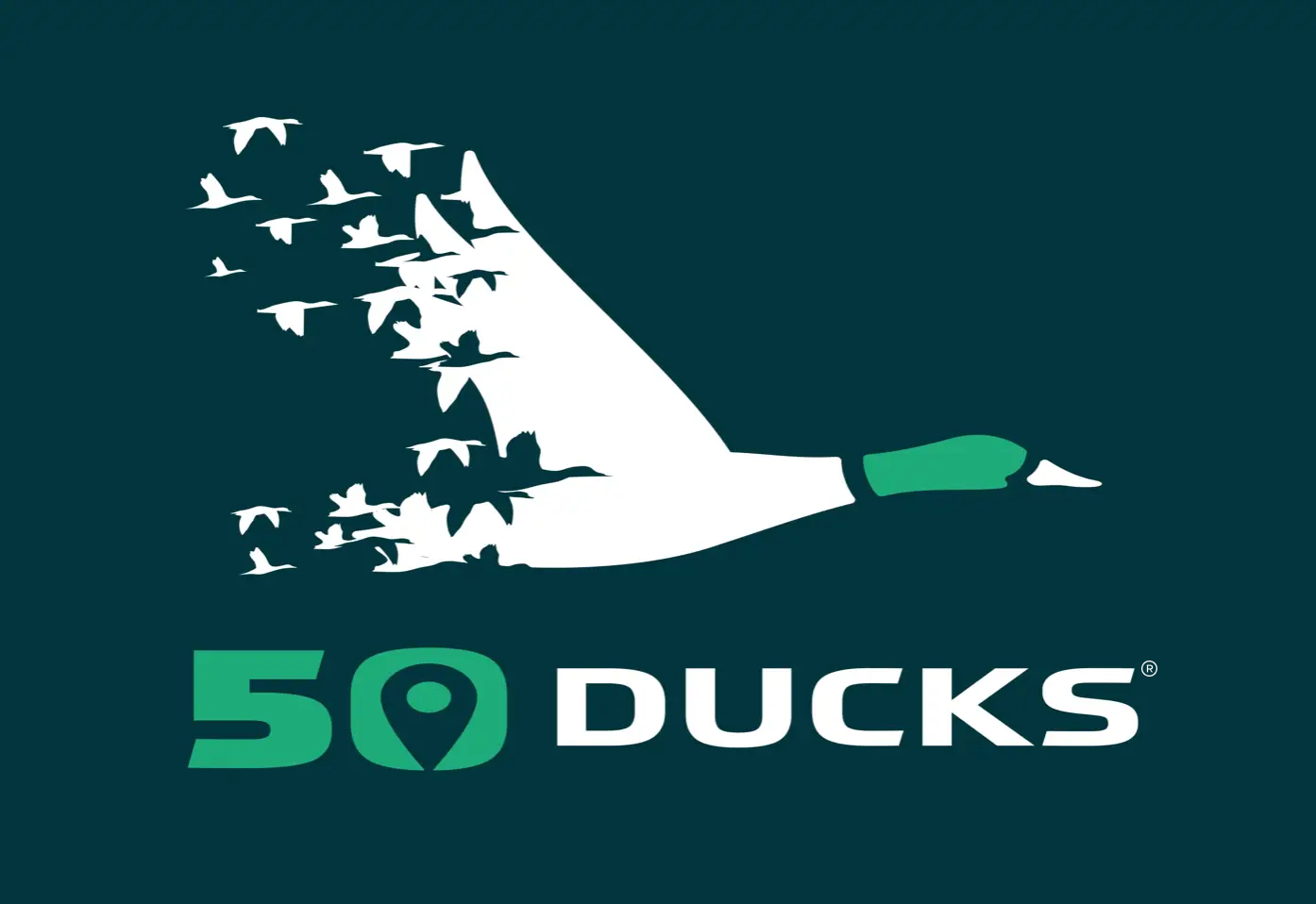The Importance of Bottomland Hardwood Forests for Waterfowl Conservation
October 4, 2023

One of the lesser well known habitats essential to waterfowl habitat and sustainability are bottomland hardwood forests and their indispensable role in waterfowl conservation. These unique ecosystems, known as deciduous forested wetlands, thrive along river bottoms and experience seasonal flooding. You can find them in Arkansas and along the Mississippi River.
With limited direct sunlight reaching the forest floor during summer, these forests are full of tree cavities, snags, and downed logs that make these forests a haven for wildlife. In today’s post, we’ll discuss their role in sustaining the hardwood forest ecosystem and preserving waterfowl populations. Keep reading to find out the significance of waterfowl conservation within these habitats.
The Role of Bottomland Hardwood Forests
When examining the role of bottomland hardwood forests, there’s more than meets the eye. These unique ecosystems can resemble swamps at times and dry up at others. This ever-changing nature often creates seasonal habits crucial to waterfowl success. They provide an essential habitat for wood ducks, Mallards, Teal and many other duck, and non game species. These ecosystems often play a critical role in filtering nutrients, improving water quality, and absorbing floodwaters.
You can find these forests between flood-control levees and major rivers, where they act as vital buffers, safeguarding levees and protecting valuable croplands and other areas of human interest. Beyond their ecological significance, bottomland hardwood forests offer several ecosystem benefits. From flood control and water quality enhancement to biodiversity preservation and habitat provision, these forests have far-reaching impacts that extend beyond their immediate surroundings.
We must acknowledge the decline and the connection between forests and waterfowl conservation. By understanding and appreciating the value of these hardwood forest ecosystems, we can work towards their preservation and ensure the continued thriving of both wildlife and human communities. Currently, we lose about .8% of waterfowl wetlands every year, Hardwood forests make up a large percent of this decrease.
Waterfowl Species and Habitat Requirements
Waterfowl species and their habitat requirements present several fascinating factors to consider. North America is home to a remarkable variety of waterfowl species, boasting 41 official slam species. From graceful ducks to majestic geese, elegant swans, and even the regal crane, each species has needs and distinct requirements for its ideal habitat. Unfortunately, these crucial habitats continue to be lost at a rate of .8% per year largely due to human development. Understanding nesting habits is crucial to understanding the importance of habitat preservation. Many dabbling ducks nest in grassland habitats near small wetlands, where their mates have established territories. During winter, many waterfowl species migrate to their wintering grounds. The primary requirement for wintering ducks is food, and they seek out diverse habitats like moist-soil emergent wetlands, forested wetlands, coastal marshes with submerged aquatic vegetation, and flooded agricultural fields.
That is where the true importance of bottomland hardwood forests becomes clear. These magnificent forests play a key role in many species wintering success rates, as well as play an indispensable role in maintaining the overall health of the hardwood forest ecosystem. It’s remarkable how these forests provide the essential elements for waterfowl to survive and flourish. They create a haven of life and sustenance, ensuring our feathered friends have everything they need.
Environmental Threats To Waterfowl
Bottomland hardwood forests, with their rich history shaped by the forces of fire, flood, drought, and wind, are facing new challenges brought on by human-induced threats. Disturbances like drainage projects, road construction, timber harvesting, and land conversion to non-forest uses increasingly impact these natural communities. Another significant issue is Altered Hydrology, where changes in peak discharge and runoff volume disrupt the delicate balance of waterfowl habitats.
Preserving the health and vitality of bottomland hardwood forests and the intricate hardwood forest ecosystem is crucial for waterfowl. It’s not just about protecting these habitats. We need to safeguard the very essence of life for these magnificent birds. By tackling the threats that humans impose on these ecosystems and taking active steps to minimize the impact of human encroachment we can make a significant difference for future generations.
Conservation Efforts and Success Stories
In the face of environmental threats to waterfowl, government bodies and non-governmental organizations (NGOs) have implemented initiatives and programs that address these challenges. One example is the Bottomland Hardwood Tree initiative, which focuses on restoring hardwood forest ecosystems within floodplains.
As part of this initiative, the Conservation Reserve Program (CRP) offers farmers and landowners opportunities to achieve farming and conservation goals with incentives. By participating in CRP, they can receive financial benefits such as annual rental payments over 10-15 years, covering 90% of eligible costs for establishing wetland restoration practices. CRP is the same government program that is used to restore native prairie land in the Dakotas and prairie Canada. It is one of the most important pieces of legislation in regards to waterfowl success.
The U.S. Fish and Wildlife Service also plays a role in protecting our forests and waterfowl habitats. For instance, the Marais des Cygnes National Wildlife Refuge in eastern Kansas plants seedlings to restore bottomland hardwood forests. Through collaborations with organizations like The Conservation Fund: Go Zero Program, significant efforts have been made to restore the forest and plant native trees, resulting in the restoration of 2,500 acres.
Challenges and Future Directions
Conserving bottomland hardwood forests is not without its ongoing challenges. The US Forest Service has identified several impacts that pose significant obstacles to these valuable ecosystems. These challenges include the rise in heavy precipitation events, resulting in higher total runoff and peak streamflow during the winter and spring.
Weather conditions will lead to frequent flooding and increased soil erosion. To address these challenges, research, and innovation play a crucial role in developing effective conservation strategies. One approach is to plan for more frequent and severe flooding by introducing flood-tolerant species into these forests. Similarly, planning for increases in temperature can involve planting species and genotypes from more southern areas, better suited to withstand warmer conditions.
Public awareness and engagement also play a role in the future direction of bottomland hardwood forest conservation. Initiatives like the Bottomland Hardwood Learning Exchange have brought together experts from various backgrounds to improve the management and restoration of these forests. By fostering collaboration and sharing knowledge, these exchanges help illustrate the diverse social values associated with hardwood forest ecosystems and pave the way for more inclusive and effective conservation strategies.
For those keen on understanding hardwood bottoms in depth, we recommend visiting the Five Oaks Agricultural Research and Educational Center. Additionally, the University of Arkansas at Monticello provides comprehensive resources on how you can contribute to conservation efforts.
Wrapping Up
As we face the challenges ahead, it is crucial you remain committed to preserving bottomland hardwood forests and the invaluable ecosystem services they provide. If we embrace innovative approaches and foster public involvement, a sustainable future is on the horizon for these remarkable habitats. The waterfowl community is over 2 million strong. Join us in our conservation efforts and start tracking ducks today!


